To make the knotting cord, half of each color was carded twice through on the drum carder. The batts pulled into a worsted roving then were spun Z twist on a double drive flyer wheel, ratio 19:1. Extra twist was added. The singles were then Navajo three plied on a double drive flyer wheel, ratio 12:1. The finished yarn was steam set in a commercial steamer for 8 hours.
The fiber that was set aside for weaving was carded on the drum carder three times, two handfuls of white to one each of magenta and lavender. The final batts were very well blended but not to the point of being heathered or tweedy.
To spin the warp threads, I
pulled the batts into a worsted roving. These I spun on a double drive flyer wheel, ratio
19:1. They were plied on the same wheel and given a balanced twist. The diameter of the
single was about the size of the fiber crimp.
The batts that were used for weft were tightly rolled into
enormous rolags and then pulled into woolen roving. The weft threads were spun softly in
an English Long Draw. I spun the woolen on a portable flyer wheel, scotch brake with a
ratio of 6:1.
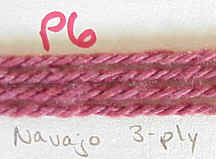 |
My loom is only 22 inches wide so I warped 3 1/2 yards, double the length needed for the sweater.
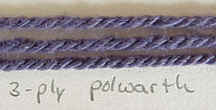 |
I
washed the fabric in Ivory liquid, drained the excess moisture out and hung to dry, then
fluffed in the dryer. For an excellent fabric finish, I blocked it, rolled it on a tube
and steam set it in the commercial steamer for six hours.
I used Virginia West's square sweater pattern from "Designer
Diagonals". This sweater pattern can be finished in many different ways. From the
remaining blended batts, I core spun over elastic to make a elastic yarn the same diameter
as the weft yarn. Using a 2 by 2 rib, I knitted cuffs, waistband and
neck rib.
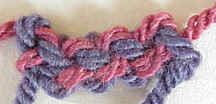 |
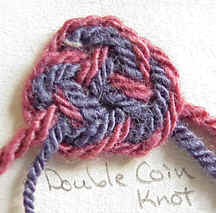 |
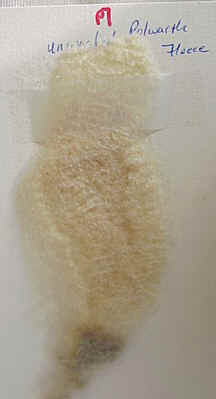 |
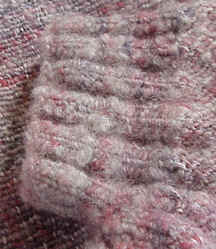 |
Detail of Elastic Cuff ![]()
Double Coin Knot Necklass
![]()
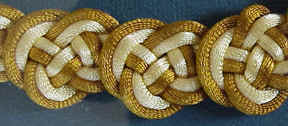 |
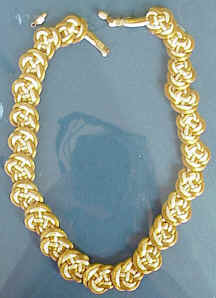 |